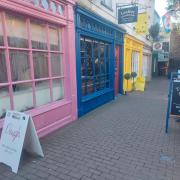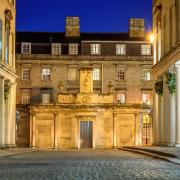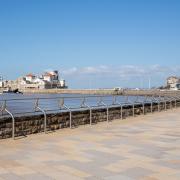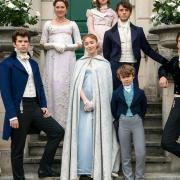Sophia Moseley looks at the love story amongst the history of one of Somerset’s finest mansions

There’s a chapter in the fascinating story of Montacute House probably best entitled Exotica Erotica and it’s a real page turner.
It involves unhappy marriages, passionate affairs and the ultimate betrayal of a woman blinded by unrequited love.
Elinor Glyn, the early 20th century equivalent of Barbara Cartland, was very much a product of her upbringing with a mix of French aristocracy thanks to her grandmother, who taught her the very strict rules of the upper classes and who frequently told Elinor stories of how her ancestors escaped from France during the French revolution.
Despite Elinor’s lack of noble breeding, thanks to her grandmother, she was able to enter the echelons of high society.
Credited with coining the phrase ‘It girl’, Elinor grew into a beautiful and fascinating woman with a talent for writing exotic stories, however she struggled to find a man who matched her exacting standards and frequently rejected many advances. This could explain why Lord Curzon of Kedleston found her so alluring.
Lord Curzon, viceroy to India in 1898 was a focussed, inflexible and confident man who believed completely in colonial rule. His political rise was meteoric and whilst he was the first to make a move, Elinor soon fell under his spell.
It was Elinor’s erotic love story, Three Weeks, that took the world by storm in 1906, giving her a reputation as a bit of a scarlet woman. Among her more unusual fan mail was a tiger skin from Lord Curzon. Their relationship finally took off in July 1908 after Curzon saw the performance of Three Weeks at the Adelphi in London.
In 1912 Elinor rented a house in Park Lane by which time her love of interior design had started to grow (she painted the walls of a London flat with purple varnish) and Curzon became a regular visitor.

In the summer of 1915 Curzon joined the coalition government and whilst Elinor’s passion grew Curzon remained indifferent although he did lease Montacute House in the autumn of 1915 so Elinor could move in.
Montacute House was cold (there was no heating) and isolated so a far cry from what Elinor was used to, but with her love of decorating as well as Curzon, she took on the refurbishment.
She started in their bedroom; the Garden Chamber (that overlooks the West Drive and North or ‘Privy Garden’ which was the more intimate of the Montacute gardens) where she created an exotic and unusual décor.
The Harrods washstand and a white sheepskin rug from Harvey Nicholls along with an enormous oak bed that was made exclusively for Curzon by Halliday of Wells, added to the grandeur of the room.
But it was the extravagance of a state of the art ensuite bath that is probably the most elaborate addition. The huge bath was brought down especially from London and installed in a corner of the room; it was neatly enclosed by large panelled wooden doors, perhaps to reduce the steamy atmosphere of the bedroom.
The other rooms continued with the elaborate theme including the library (or Great Chamber) that had a purple carpet and purple and orange curtains, that when combined with the green velvet cushions on two orange damask armchairs, would have created a spectacle of sumptuous colour.
The vibrant décor was made all the more stunning by the additional ornaments including large Mazarin blue and gold mandarin ginger jars, two tall Chinese vases from Liberty London and a green brocade priest’s robe that was draped over a chest.
Added to all of this were three tiger skins brought back from India by Curzon.
Elinor stayed at Montacute for over a year, but while she suffered the bitter cold to create a beautiful boudoir all in the name of love, Curzon was seeking his pleasure elsewhere.
It seems likely that Curzon removed Elinor from the London scene so he could start another affair with wealthy American Grace Duggan. By the spring of 1916 Elinor had a hunch things weren’t right.
On 10 December 1916 the papers announced Lloyd George’s War Cabinet that included Curzon and it was in the same newspaper that Elinor read of Curzon’s engagement to Grace Duggan. They were married in January 1917.
With no letter of explanation or word from Curzon as to this sudden and very public humiliation, in a fit of lover’s fury Elinor burned each of his 500 love letters in their bedroom fireplace.
She left Montacute and had no further contact with Curzon, instead occupying herself in her work and the war effort.
Curzon’s dreams of becoming Prime Minister or having a male heir never materialised and he died an unfulfilled man.
There are still some tell-tale signs of Elinor’s residency, including the ensuite bath and a panel of Genoese wallpaper that is hidden from the public eye behind a radiator and there are some who say you can feel the sadness that lingers where once the passion burned.



























